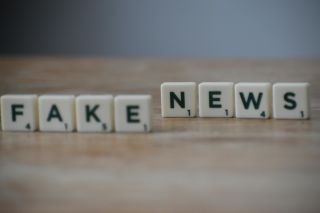False Memories
Online Misinformation Produces False Memory
Not all misinformation is equal in its damaging effect.
Updated April 5, 2024 Reviewed by Ray Parker
Key points
- Online misinformation is detrimental to memory.
- People are more susceptible to online misinformation peripheral to an event.
- The core details of an event are less susceptible to online misinformation.
Misinformation has become an epidemic in the Internet age. It undermines interpersonal trust, acerbates political polarization, threatens social order, and creates fear and uncertainty. The damaging effects are immense for individuals, communities, and society as a whole.

To some extent, for misinformation to “get to us,” we have to “take it in.” Yet not all misinformation is equally persuasive and thus effective in producing false beliefs and false memories. Research has shown that many factors, such as the emotional tone and logical coherence of a news report, influence how people perceive the truthfulness of its information.
In a recent study from my lab, we looked into the role of information centrality in creating false memory. Central information concerns the key elements of an event, such as who were the protagonists and what happened to them (e.g., Angie gave money to a street guitar player). Peripheral information, in contrast, concerns the surrounding contextual details outside the main course of the event (e.g., there were people walking on the street). Given that central information directly defines the event’s meaning, information deviating from it, namely central misinformation (e.g., the guy was playing violin on the street), would be less likely to be accepted as truthful than peripheral misinformation (e.g., there was a group of runners nearby).

We examined how exposure to online misinformation, either central or peripheral to the original event, would affect memory. We let our participants watch GIFs of daily life events (e.g., a woman tipping a street musician). We then presented them with simulated tweets containing either central or peripheral information that was either true or false to the GIF events. Afterward, participants were tested for their memories of the GIF events: They read statements containing information they previously viewed in tweets or information not included in tweets and judged each statement as true or false pertaining to the GIF events.
We found that participants were more likely to falsely recognize misinformation as true if the misinformation had previously appeared in tweets than if not. Furthermore, they showed greater susceptibility to peripheral than central misinformation exposed via tweets: Peripheral misinformation in tweets was falsely recognized more and accepted with less resistance than central misinformation.
Thus, after people experienced or witnessed a real-life event, subsequent exposure to online misinformation greatly increases false memories. This is particularly the case when the misinformation pertains to the peripheral rather than central aspects of the event. Interestingly, Asian and White American participants in our study showed the same pattern of false memories after being exposed to misinformation via tweets, although in one experiment, Asians were less influenced by misinformation than Whites.
The Internet and social media have greatly amplified the spread of misinformation. This, coupled with a lack of effective fact-checking on platforms, has resulted in a calamity that calls for research and intervention. Understanding factors associated with the negative impact of misinformation is critical to help us more effectively combat misinformation.
References
Bilgin, E., & Wang, Q. (2024). The mnemonic effect of central and peripheral misinformation on social media. Memory, 32(3), 369-382. https://doi.org/10.1080/09658211.2024.2323935.


